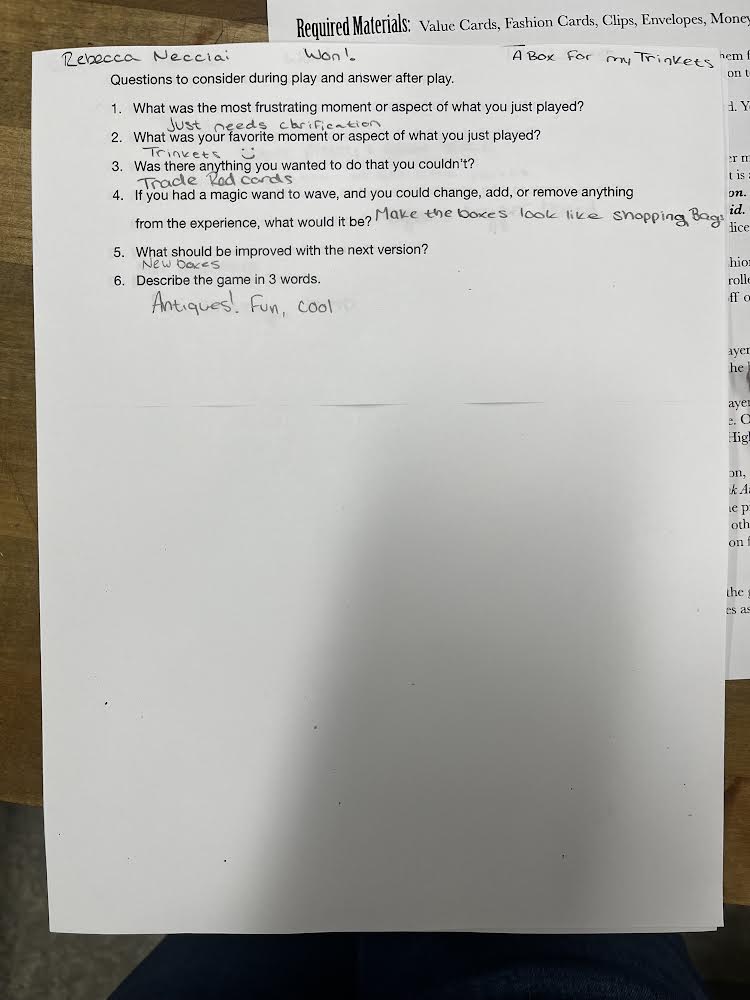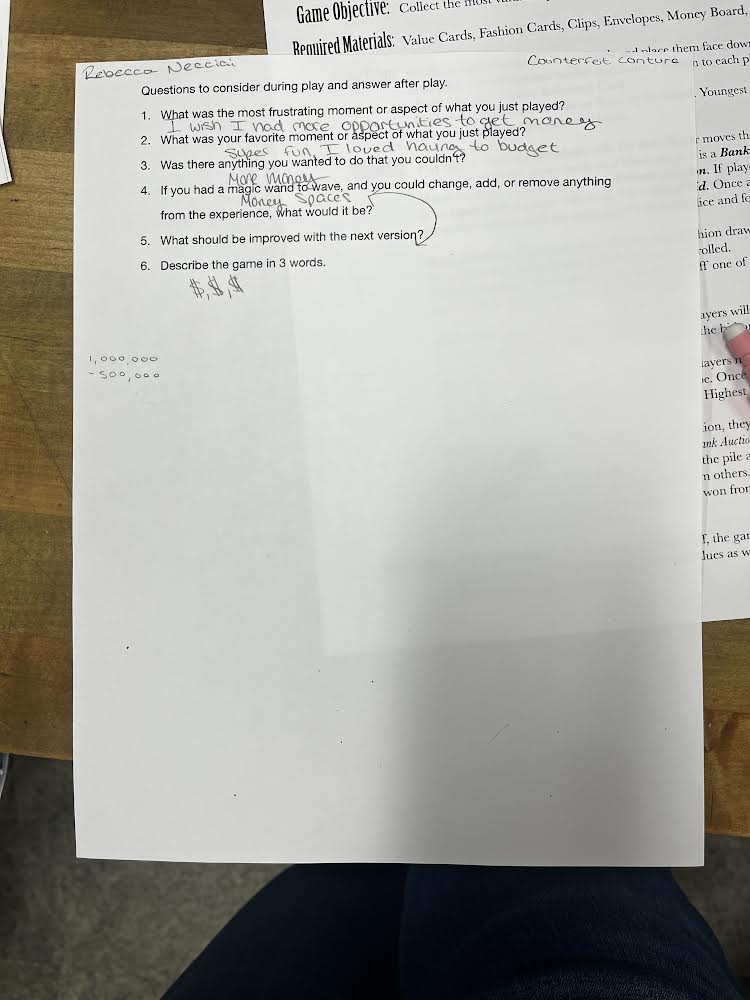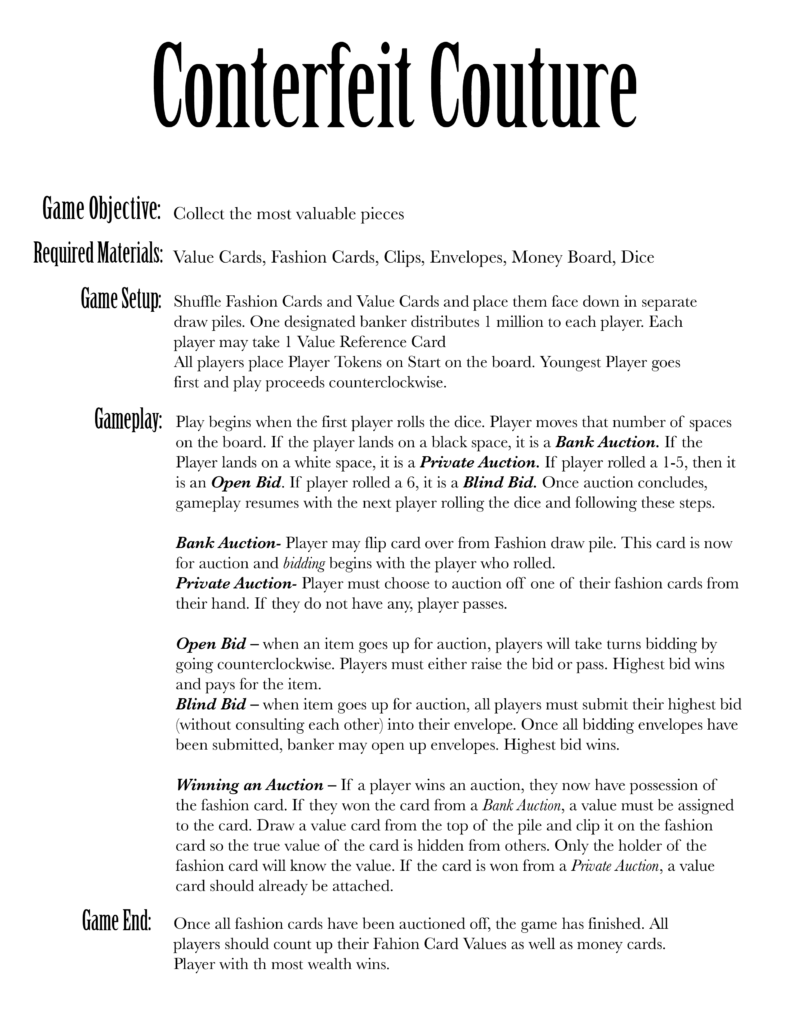What were the player interactions?
Trading, Negotiating, Blocking
Was it fun?
Yes
How long did it take to learn?
15-20 min
Would you play it again?
Yes
Analyze the game using the 3 act structure.
- Setup and build initial settlements.
- Conflict starts to arise from resources and trading.
- The final starts when strategies start to unfold and someone wins the game
What are the collaborative and or competitive aspects of the game?
Trading resources and building / scoring
What is the game’s metaphor and which of the game’s mechanics standout?
Metaphor for resource management and community building. The trading and building stand out to me.





